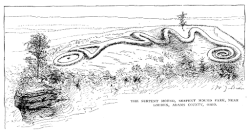| Periods in North American prehistory |
|---|
 |
Several chronologies in the archaeology of the Americas include a Formative Period or Formative stage etc. It is often sub-divided, for example into "Early", "Middle" and "Late" stages.
The Formative is the third of five stages defined by Gordon Willey and Philip Phillips in their 1958 book Method and Theory in American Archaeology.[1] Cultures of the Formative Stage are supposed to possess the technologies of pottery, weaving, and developed food production; normally they are very largely reliant on agriculture. Social organization is supposed to involve permanent towns and villages, as well as the first ceremonial centers. Ideologically, an early priestly class or theocracy is often present or in development.[2]
Sometimes also referred to as the "Pre-Classic stage", it followed the Archaic stage and was superseded by the Classic stage.[3]
- The Lithic stage
- The Archaic stage
- The Formative stage
- The Classic stage
- The Post-Classic stage
The dates, and the characteristics of the period called "Formative" vary considerably between different parts of the Americas. The typical broad use of the terms is as follows below.
- ^ Willey, Gordon R. (1989). "Gordon Willey". In Glyn Edmund Daniel and Christopher Chippindale (ed.). The Pastmasters: Eleven Modern Pioneers of Archaeology: V. Gordon Childe, Stuart Piggott, Charles Phillips, Christopher Hawkes, Seton Lloyd, Robert J. Braidwood, Gordon R. Willey, C.J. Becker, Sigfried J. De Laet, J. Desmond Clark, D.J. Mulvaney. New York: Thames & Hudson. ISBN 0-500-05051-1. OCLC 19750309.
- ^ Gordon R. Willey and Philip Phillips (1957). Method and Theory in American Archaeology. University of Chicago Press. ISBN 978-0-226-89888-9.
- ^ "Method and Theory in American Archaeology". Gordon Willey and Philip Phillips. University of Chicago. 1958. Archived from the original on 2012-06-28.